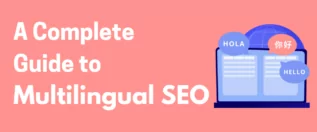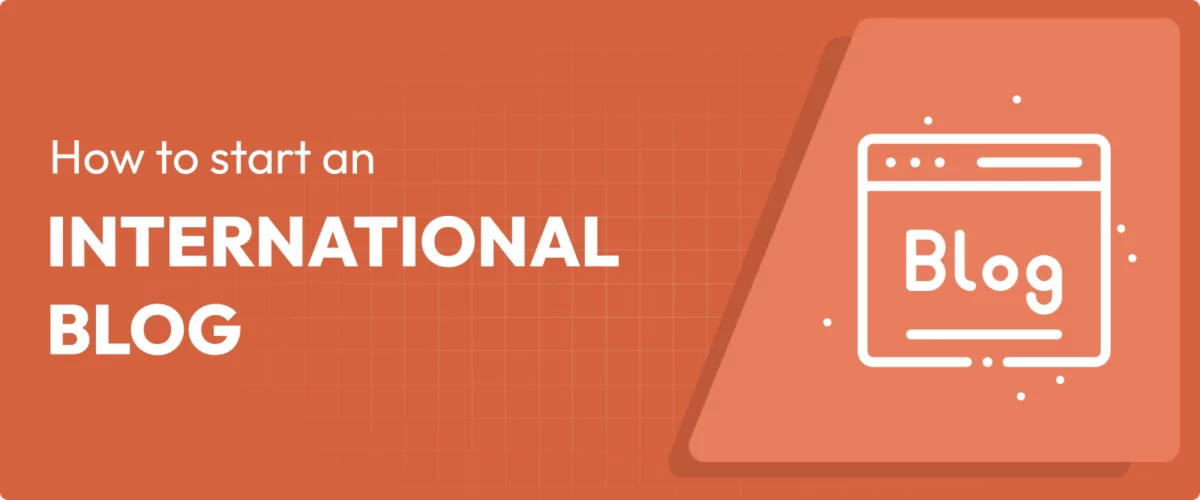
In this post
Opening up your blog to a global audience can be a super effective way to accelerate its growth. It allows you to attract a wider audience and speak to potential readers and customers in their own language. But, contrary to popular belief, international blogging is more than just translation.
In fact, it’s not as easy as it sounds. You’ll have to create content that is both linguistically and culturally appropriate for whoever you are targeting. In addition, you’ll have to develop an international SEO strategy and find ways to promote your localized content in places your audience frequents.
All of that can be a tall order, which is why we are here to help. Below, we have compiled step-by-step instructions for how to create an international blogging strategy. We talk about reasons why appealing to a multinational audience with your blog is an excellent idea and how you can do it the right way.
Why Start an International Blog?
Blogging for more than one locale offers numerous benefits. Here are some of the reasons you should consider taking your blog global:
- Extend your reach – As already alluded to, by targeting audiences from various parts of the world, you can significantly expand your readership. This means more visitors to your site, more customers for your business, and wider recognition.
- Open new revenue streams – Expanding your blog to international markets can unlock new opportunities for bringing in extra revenue. This could be through advertising, sponsored posts, affiliate marketing, or selling products and services tailored to different regions.
- Build a global brand – By establishing an international presence, you build a strong brand that’s recognizable across borders. More fans around the world help your industry authority.
- Create networking opportunities – Engaging with an international audience allows you to connect with influencers and industry leaders from around the world, or even simply make friends with other creators. This can lead to new partnerships and collaborations.
- Improved SEO and global authority – Optimizing your content for different languages can lead to more diverse search engine rankings and increased authority. You could potentially become a go-to resource in many countries.
How to Start International Blogging: Step-by-Step Instructions
Creating an international blog is no simple task. It requires a lot of planning and forethought. Let’s cover the process in detail.
Step 1. Research Your Market(s)
Yes, you can use machine and AI translation tools to quickly convert your content into another language and bring it online. However, that only ensures your audience can read your blog posts, it does not tailor them to their culture or specific country or region.
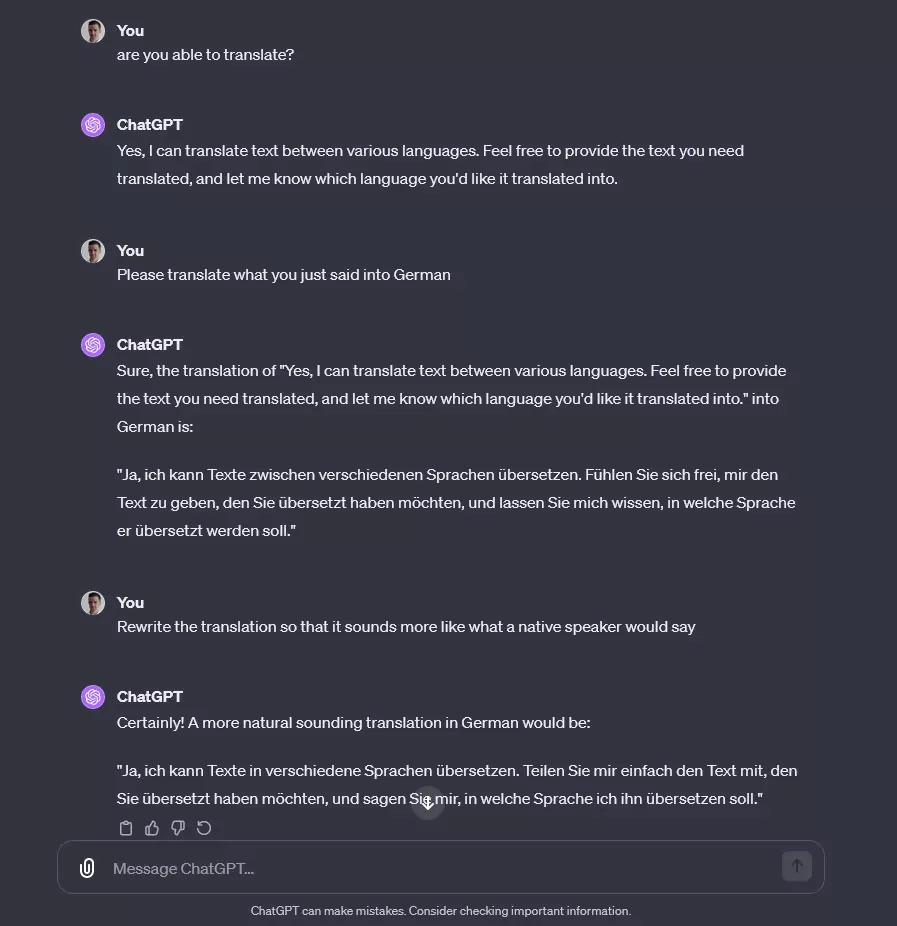
Readers usually respond better if the content is highly relevant to them instead of generic. For example, imagine reading an article about weight loss foods and you know none of the dishes and most of the ingredients mentioned are unavailable where you live. You would click away quickly, wouldn’t you?
Your audience is the same. Consequently, if you want your international blogging strategy to work for exactly who you are intending it for, you won’t get around doing market research.
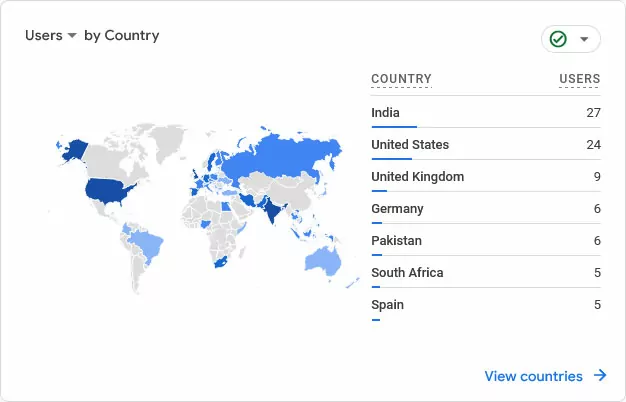
The first step for that is to know who you are trying to attract. If you have an existing blog, you might already have a good idea about the demographics interested in what you have to offer. Be aware, however, that this might not be exactly the same in other countries. So do your due diligence.
Once settled on your desired audience, it’s time to identify topics of interest. Some themes are globally appealing. Subjects like food, travel, lifestyle, technology, and health often have a broad reach. You might even have content in these areas on your blog already that’s ready to adapt to another locale. But every region has its own characteristics, so be sure to find out what they are, e.g. local holidays, foods, or preferences.
There are plenty of tools for this purpose. You might use Google to track down similar blogs in your niche to analyze their content strategy. Marketing platforms like Hubspot, Google Trends, Ahrefs, or SEMrush also offer plenty of ways to research potential readers and customers.
Step 2. Create a Content Strategy
After that, it’s time to put your research to use. Creating a content strategy will help you stay consistent in outputting relevant and interesting posts.
Based on what you found out, identify core topics and themes that are likely to resonate with your international audience. Focus on both evergreen and trendy topics as a foundation for your content strategy. Plus, be sure to scour your existing blog posts for topics that are easy to adopt.
Then you can start developing a content calendar. Brainstorm article ideas you’d like to cover and create a schedule. Make sure to mark down any key events or dates you learned about before.

Aside from written content, you may also wish to think about other formats to keep your audience engaged. Videos, podcasts, infographics, and interactive content could all add extra appeal.
Even after you’ve launched your blog, keep an eye on trends and continue performing market research. This will keep you in touch and help you target new and fresh topics.
Step 3. Create and Localize Content
With a detailed plan in place, it’s time to actually create, translate, and adapt your content to your new target audience. Here are a few tips to successfully do so:
- Localize content – Don’t just translate, localize. Content should fit into the local culture and not include references, idioms, or phrases that are irrelevant or misunderstandable. You might also want to look into transcreation for the rest of your branding.
- Adapt units and formats – Part of this process is to ensure that dates, times, measurements, and currency fit the target region (yards to meters, date-month-year format, etc.)
- Don’t forget your visual elements – Consider the cultural significance of images, symbols, and colors used in your content, as they could mean very different things to another culture. Also make sure to translate images with text in them if you’re adapting existing articles and web pages.
- Adhere to legal and ethical guidelines – Be mindful of local laws and ethics, as content acceptable in one region may be interpreted very differently elsewhere.
- Gather feedback – After translating, gather feedback from a segment of your target audience on translation accuracy and cultural appropriateness of your content.
Step 4. Focus on International SEO
Once you have your content in hand, the next step is to optimize it for local search inquiries. Search engines are one of the main sources of traffic for most websites and getting your adapted content in front of your international target audience requires a solid international SEO strategy.
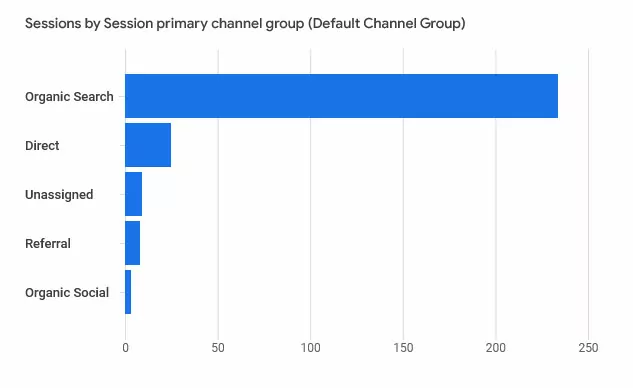
What does that mean?
- Use regional keywords – Start by conducting international keyword research. Tools like Google Keyword Planner and the aforementioned Ahrefs and SEMrush can help identify popular search terms in different languages.
- Localize meta tags and descriptions – In order to work as signals, your localized keywords need to show up in relevant parts of your website. These include the meta title and descriptions, image alt tags, URL slugs, and more.
- Add hreflang tags – Implementing hreflang tags signals to search engines which language your content is intended for. These tags help prevent duplicate content issues and ensure the right version of your pages appear in local search results.
- Provide international sitemaps – Create sitemaps for different languages to help search engines index your localized content more efficiently.
- Build backlinks – High-quality backlinks from reputable websites in your target regions signal search engines that your content is relevant and authoritative in those regions, boosting SEO.
Step 5. Promote Your Content
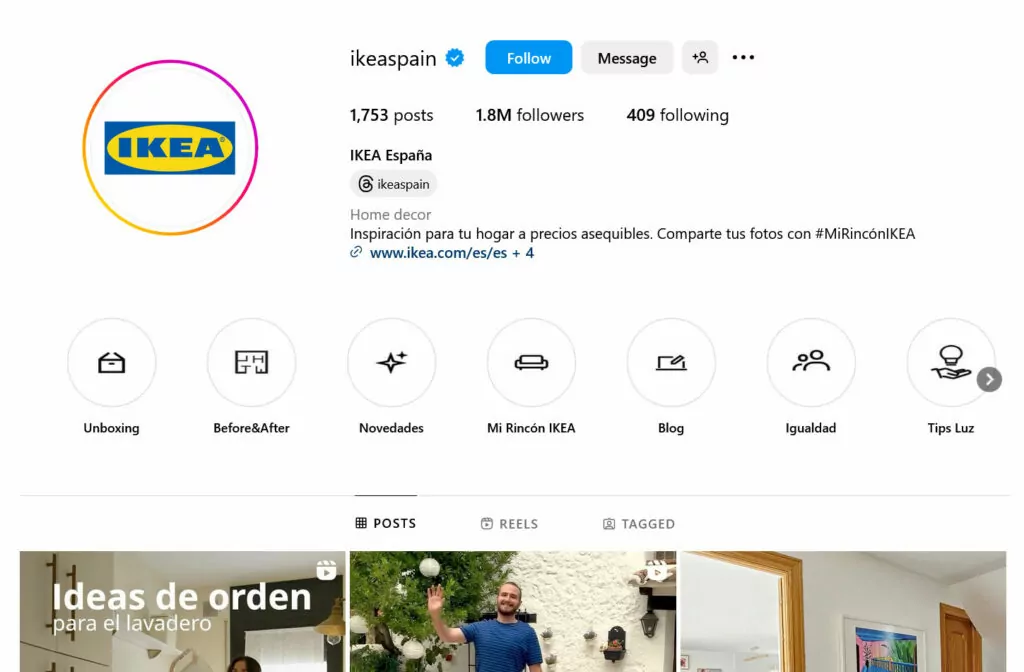
While SEO can draw organic traffic, active promotion helps engage your audience and build a positive reputation. It also allows you to integrate yourself in local conversations and enhance your branding. Consider the following strategies for that:
- Use social media – Social media platforms are powerful promotion tools. Create accounts on popular platforms in your target regions, such as Facebook, Instagram, and Twitter. Use your market research to decide which make the most sense. Don’t forget regional platforms like WeChat and VK. Create separate accounts for each language you’re targeting.
- Localize social media content – Develop region-specific social media strategies. Post things that are relevant to the local audience, use local hashtags, and engage with followers in their native language. Post regularly and at times when your target audience is most active. You may wish to hire a social media manager from the target region for this.
- Partner with local influencers – Working with influencers who have an existing audience in your target region can help introduce your blog to more people and even help your content go viral.
- Build a community – Actively engage with your readers on your blog and social media by responding to their messages and mentions in their language. Encourage readers to reach out and interact. Also, join forums and other online communities in your niche and share your content.
- Consider localized ad campaigns – When running ads on platforms like Google Ads or Facebook Ads, you can create localized campaigns that target particular regions. Translate your ad copy and fit the visuals to your target audience if you choose to go this route.
- Engage in email marketing – Develop an email marketing strategy tailored to your international subscribers. Segment your email list based on language to send personalized, translated content.
How to Start an International Blog With TranslatePress
Are you ready to take your WordPress blog global but feel unsure about where to start? TranslatePress has all the features you need for international blogging success. Here’s what it can do for you.
TranslatePress Multilingual
1. Quickly Add Any Language You Need
No matter which additional market you intend to break into, TranslatePress allows you to easily add the required language to your site.
After installing the plugin, all you have to do is go to Settings → General. Once there, first choose your default language at the top. After that, use the drop-down menu under All Languages to select your new target language and click Add.
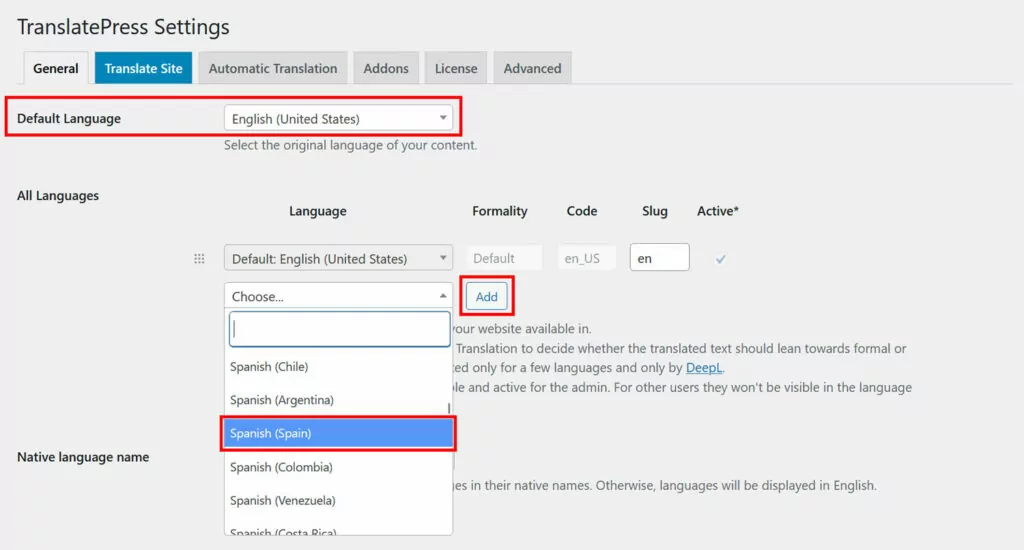
It’s worth noting that you can not only choose singular languages but also different locales, such as Brazilian Portuguese, Swiss German, or simplified vs traditional Chinese. This is very important to properly localize your content for certain areas in the world and also influences your site’s hreflang tags (more on that soon).
It’s also worth going over the other settings available on this page, in particular the ones concerning the language switcher. Yet, for the most part, this is it. All you need to do to add an extra language to your site is save at the bottom. You are then immediately ready to offer your website content in other languages, whether that’s blog posts that already exist or that you are going to create in the future.
2. Translate Existing Content With AI
As mentioned, you probably already have some posts on your blog you want to offer in another language. TranslatePress comes with several ways of translating them. The easiest is to do it fully automatic using the TranslatePress AI.
For that, still in the TranslatePress settings, go to the Automatic Translation tab. Here, switch the drop-down menu under Enable Automatic Translation to Yes and save at the bottom.
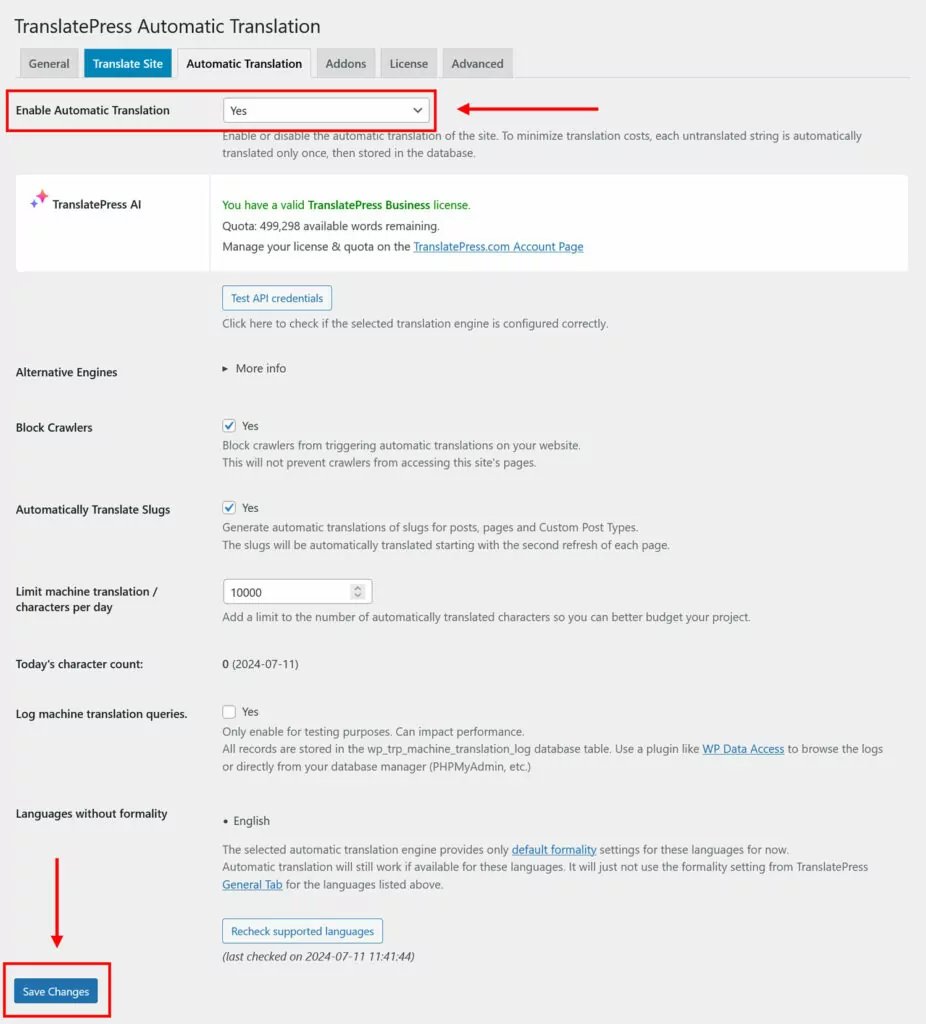
You are basically done. TranslatePress will now automatically convert your website to your target language(s). In fact, when you go back to the front end of your site and use the language switcher, the translation is likely already done.

The best part is that TranslatePress converts not just your posts and pages, but also menus, widgets, themes, plugins, and even SEO metadata.
Be aware, however, that you need a TranslatePress license and AI credits for this. You can see the number of words you have available in the TranslatePress settings. There is also an option to limit the number of characters you want to translate automatically per day to avoid blowing your budget.
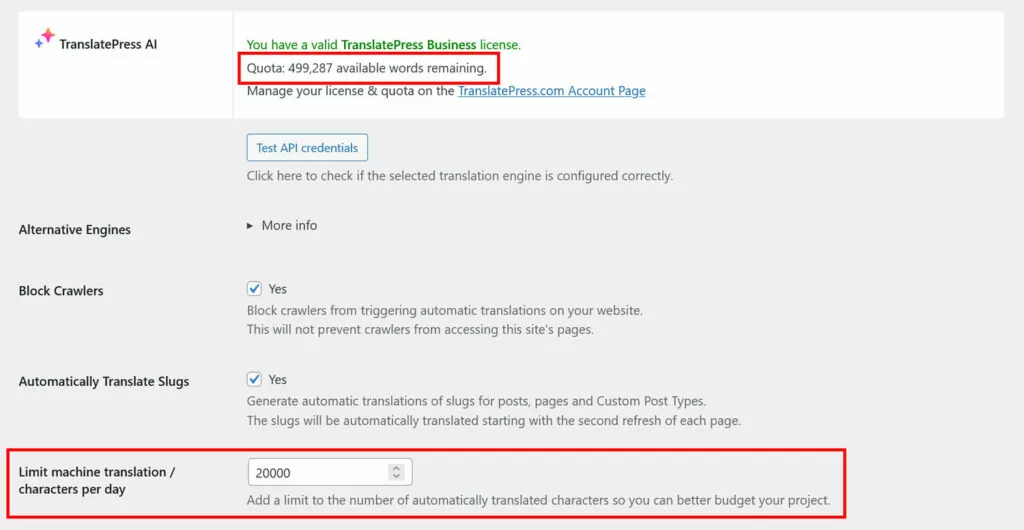
3. Alternatively, Use Google Translate or DeepL
If you don’t have a TranslatePress license or AI credits, you can also use other machine translation options. To do so, return to Settings → TranslatePress → Automatic Translations. Under Alternative Engines, choose Google Translate (if you have a TranslatePress license, DeepL is also available).

Then, you need an API key. We have a detailed guide for that (the one for DeepL is here). Instructions are also available via the link underneath the input field.

Aside from that, it works the same way as TranslatePress AI. You will find your site translated into any additional languages you choose when you visit it in your browser.
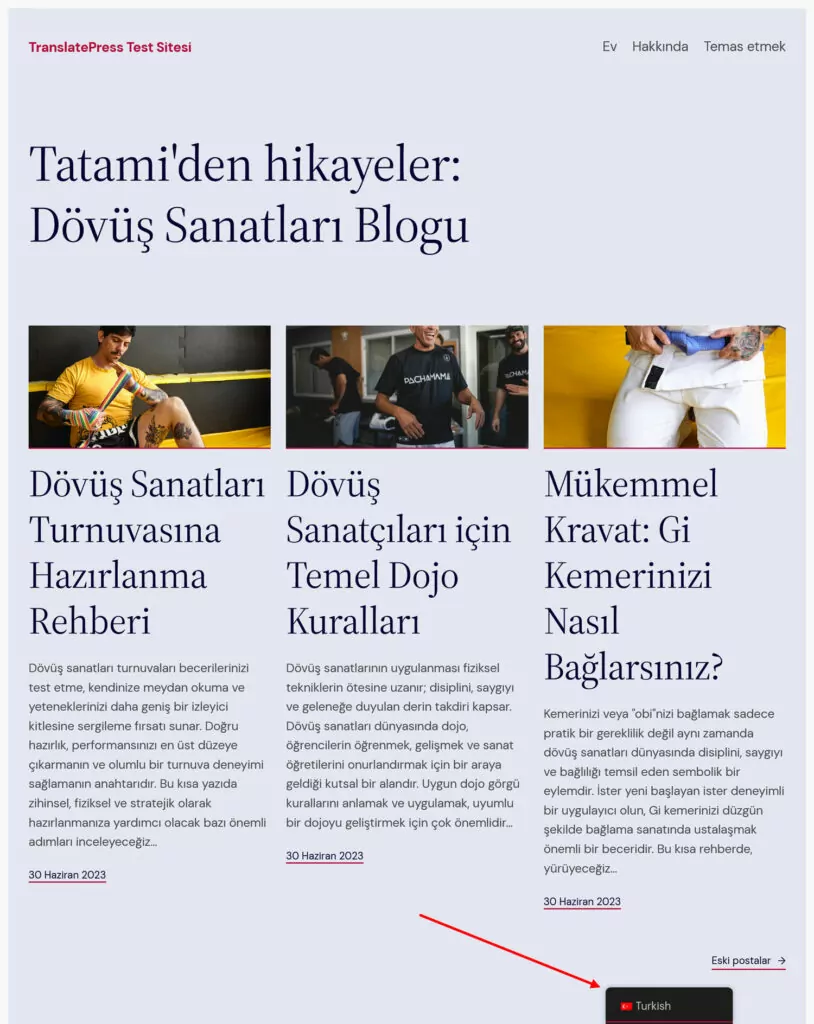
One thing to be aware of, however, is that when you use Google Translate or DeepL, you might have to pay them separately depending on your usage. On the other hand, when you use TranslatePress AI, there is no extra cost outside the plugin.
4. Manual Translation and Corrections
But what if you find that any of the automatic translations is wrong or if you want to convert your blog to another language by hand to make it international?
No problem at all. You can do all of that in the TranslatePress translation interface.
To access it, click on Translate Site in the settings or the WordPress taskbar both in the back end and front end of your site.

The screen you land on consists of a preview of your site on the right and all translation tools on the left.
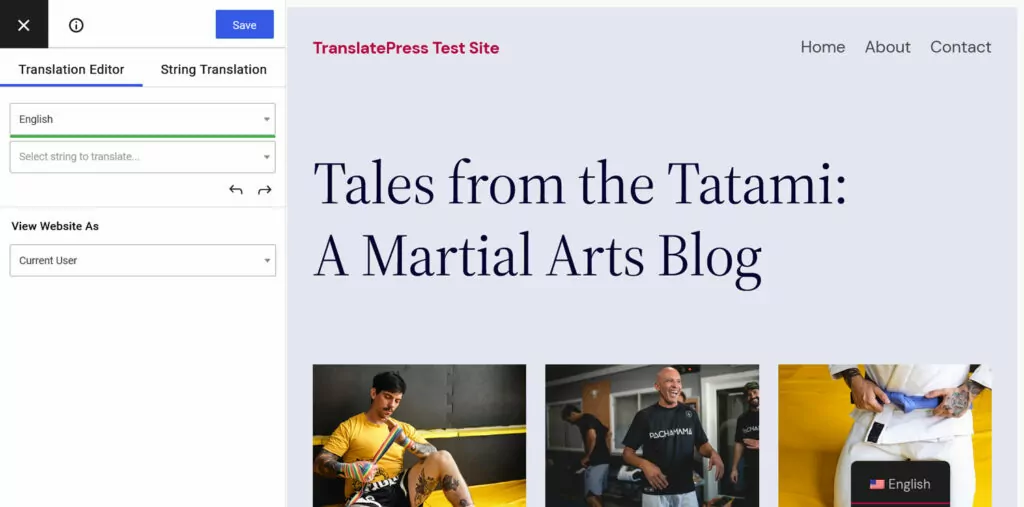
Here, your first step is to use the drop-down menu to choose your target language. That way, you see everything that has already been translated into it in the preview window.
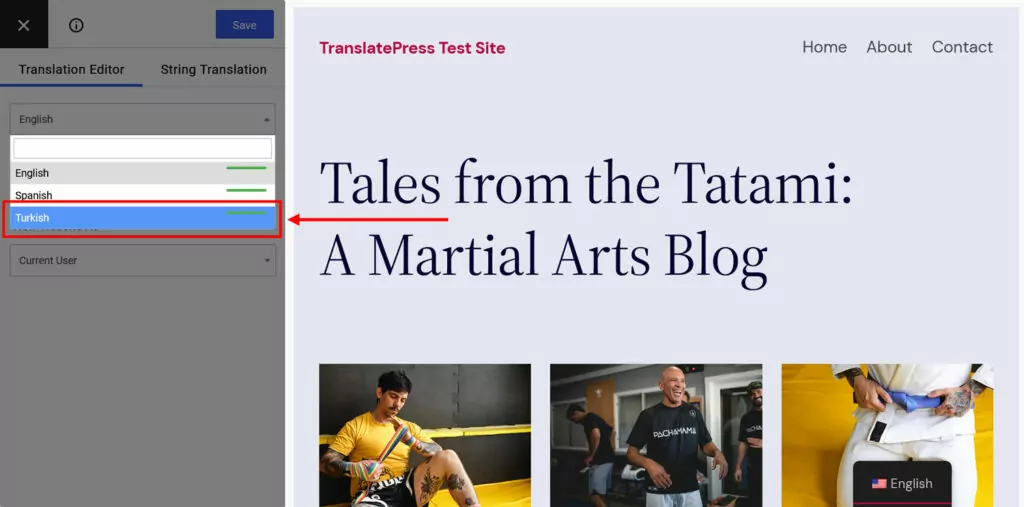
Use it to navigate your website and choose to the text you want to correct or translate. You can do the latter through the second drop-down menu, forward and backward arrows, or by clicking on it in the preview screen.
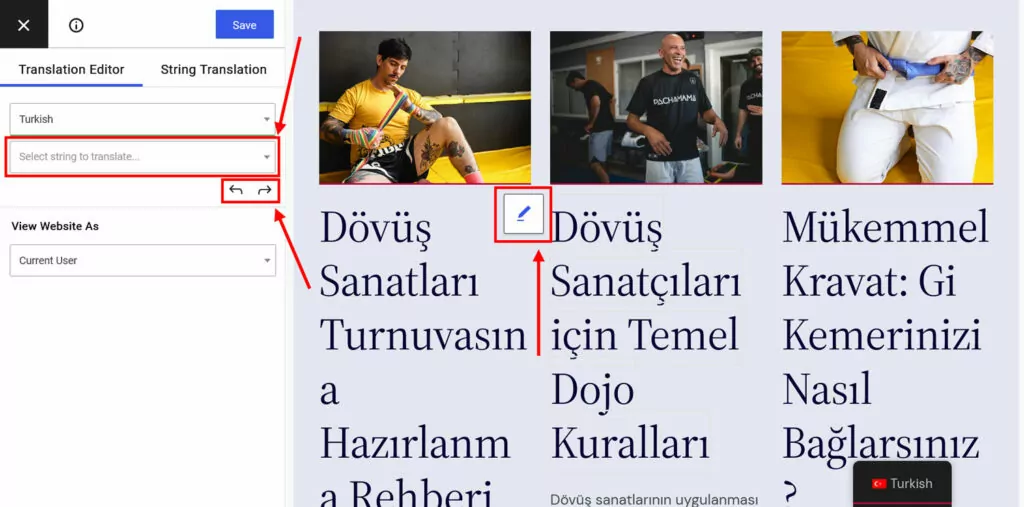
When you do, a new field appears on the left that contains the automatic translation of the text or space for your handcrafted one.
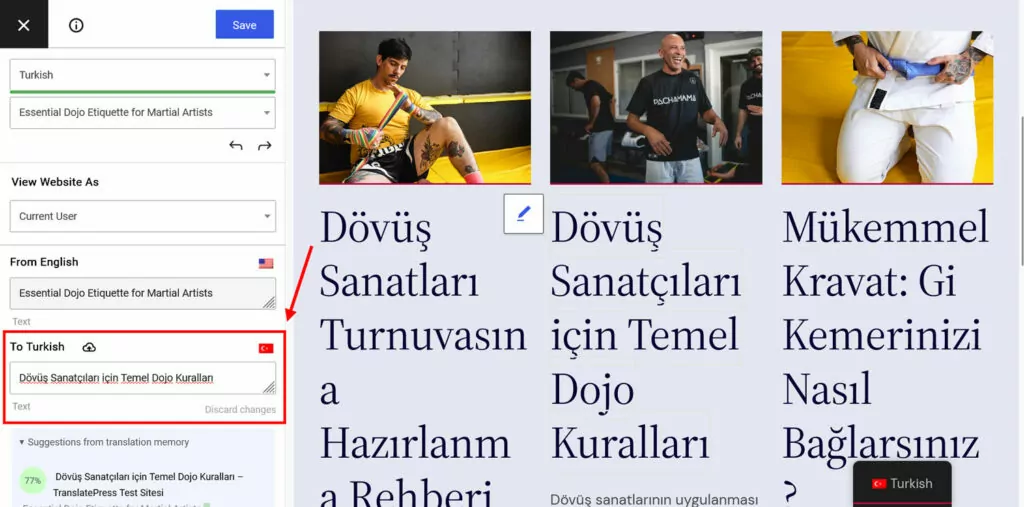
Make any corrections or input you need. When you are satisfied, click Save at the top or press Cmd/Ctrl+S on your keyboard.
That’s it. The corrected or translated string will now appear on your site for the target language.
5. Translate Images and Visuals
Above we have talked about the importance of localizing images on your international blog where relevant. You will be delighted to learn that TranslatePress can not only do this for you, it’s also just as easy as translating text.
In the same translation interface, simply choose an image, then provide a link to the translated version or pick it from your WordPress media library.
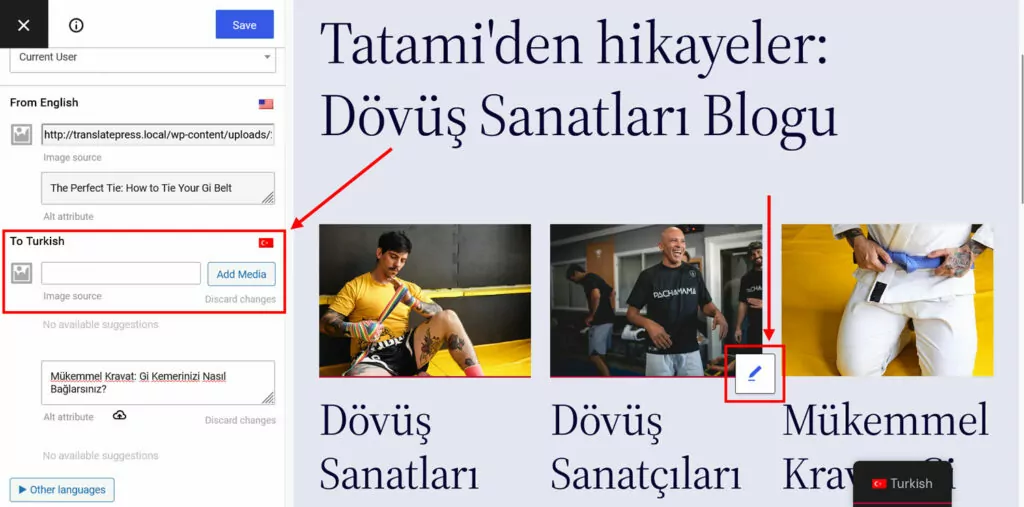
Save and you are done. Easy peasy.
6. Use TranslatePress for International SEO
In addition to its translation capabilities, TranslatePress also helps you improve your international SEO.
For one, it automatically implements hreflang tags for all your chosen languages. That way, your translated blog posts can show up in search engines for the correct language and locale and you avoid problems with duplicate content.
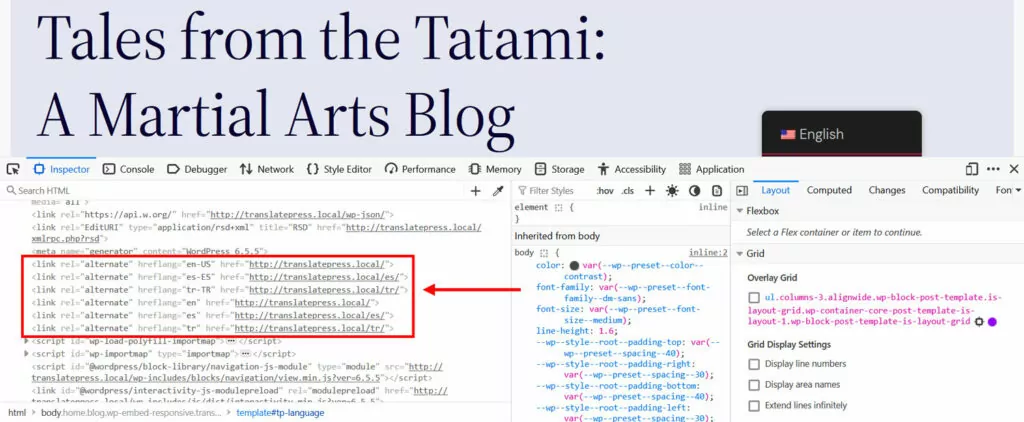
What’s more, TranslatePress Pro comes with the multilingual SEO pack. When installed, it lets you translate your page URLs, SEO titles, meta descriptions, ALT tags, and other important SEO markers.

In addition, it creates multilingual sitemaps to submit to search engines and works with most of the popular WordPress SEO plugins.
7. Other Useful TranslatePress Features for International Blogging
If the above isn’t enough, there are a few more features in TranslatePress Pro that further improve your international blog:
- Language-specific navigation – Display different menus on your site depending on the language.
- Automatic user language detection – Show your website in your visitor’s preferred language automatically.
- Dedicated translator accounts — If you work with freelancers and agencies to outsource your translation needs, you can give them their own accounts to translate directly on your website.
Start off with the free version of TranslatePress for one additional language. Beyond that, TranslatePress Pro comes with three pricing tiers so you can find the right option for you.
International Blogging Made Easy
Starting an international blog may be daunting and there are a lot of moving parts to pay attention to. But with careful planning and the right tools, it becomes much more manageable.
In addition, while complex, opening up your blog content to new languages and locales can greatly benefit it. It allows you to tap into entirely new groups of readers and attract more traffic.
Above, we have laid out the basic steps for taking your blogging to the global stage. It’s as much about preparation as it is about execution. Plus, you need to pay attention to international SEO and other promotional tactics.
If you need a hand implementing your new strategy, consider TranslatePress. It comes with all the necessary features to make venturing into international blogging a success.
